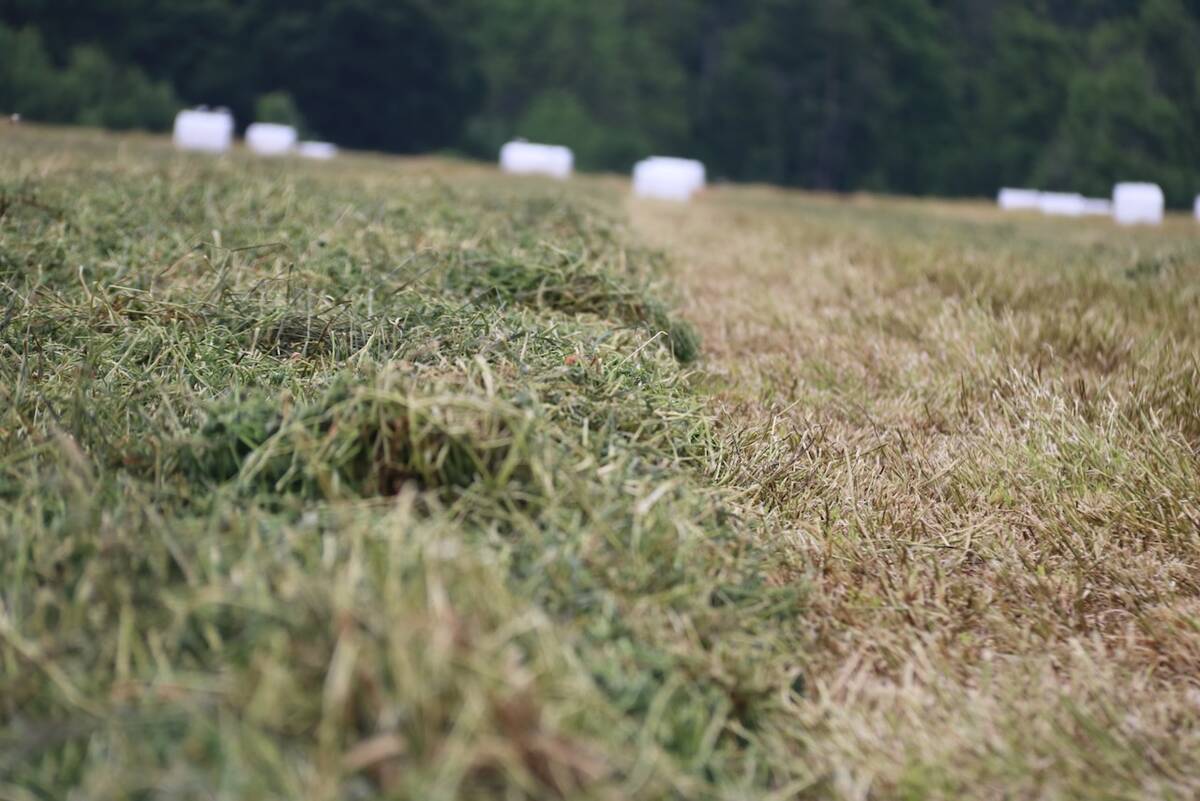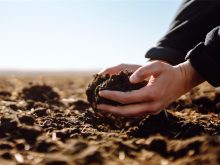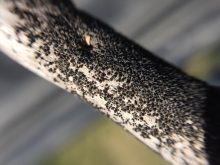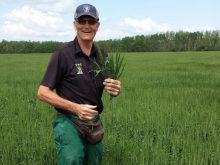Like many kids who grow up on the farm, Elliott Hildebrand fell in love with agriculture when he was a child.
When there wasn’t an opportunity to work on the farm as an adult, he pursued the next best thing — agronomy.
Now he has his bachelor’s degree and master’s degree in agronomy from the University of Saskatchewan and has been working as an agronomist for several years. He is well known for his work and has been recognized provincially for contributions to the sector.
Read Also

New high-performance forage training program to launch in 2026
A new Canadian Forage and Grasslands Asssociation high-performance forage program will be a resource for farmers, agronomists and others in the forage sector.
Hildebrand works at Western Ag Professional Agronomy and at Northland Agronomy and is based out of Langham, Sask. He focuses primarily on soil fertility and makes fertilizer recommendations to producers based on their needs. This also involves crop scouting.
With all these tasks, Hildebrand says he works hard because he is passionate about the industry and helping producers.
“It’s not just science. At the end of the day, it’s the people involved that make it all work.”
Outstanding Young Agrologist Award
A few years ago, Hildebrand received the Outstanding Young Agrologist Award, which is presented to a member of the Saskatchewan Institute of Agrologists who is under age 40 and has made a significant contribution to agriculture. The award was unexpected.
“To be recognized by your peers that way is nice, but it really speaks to the people that built into you over time,” he says, adding he had many good mentors while in university and also in his career.
“I’m very fortunate. I’ve had a lot of really good people who have invested in me throughout my career to get to this point. And I think that award really speaks to the value of building into the next people that are coming along.”
As a professional agronomist and past winner of the award, he also wants to help young agronomists like those who helped him when starting his career.
On the job
The job is busy all year, regardless of season. Hildebrand says summer involves rising early and going from field to field, then conveying findings to farmers. The fall consists of soil sampling and crop consulting to get producers ready for spring.
“Sometimes there are ongoing conversations throughout the winter as the farm changes or the plans change and staying on top of that.”
He says his passion helps him enjoy every moment. He says there are many elements of the job he loves, but it’s mainly about working closely with farmers.
“The most enjoyable part is probably seeing clients succeed. They take some information from you that made a difference to their bottom line. There’s a lot of satisfaction in that.”
He also enjoys working outside and seeing progress in the industry.
“Just the opportunity of being in fields, as you’re out there, kind of on the front lines, to see what’s happening,” he says.
As someone who knows the ins and outs of the industry, there are many things that Hildebrand is excited about.
For example, he’s looking forward to seeing intercropping become a more common practice.
“From an agronomy perspective, there’s a lot of cool things going on with intercropping that have yet to find their way into mainstream agriculture production.”
Benefits include healthier soils, good yields and lower production costs. In 2019, there were about 70,000 intercropped acres in Saskatchewan. In 2021, only 25,000 acres were reported, though there were likely more.
Hildebrand says intercropping may not be “on the near horizon” for most farms but believes it might help overcome some of the challenges that are “on the horizon.”

Plant root simulator probes are another aspect he finds exciting. The probes are ion exchange resin membranes that measure soil ion supply with minimal disturbance. They are made in Saskatchewan by Western Ag.
The probes are meant to monitor soil nutrients in all types of ecosystems and simulate the activity of roots, which provides a better measure of soil nutrient supply than a chemical soil test.
Hildebrand says they are a success story and have changed the game of soil testing for him.
“I would say those tools, they’ve really taken some of the mystery out of crop fertility for me on a personal level and turned it into this deeper mechanistic understanding of crop fertility and what people can expect from their crops in various conditions.
“And putting that on a footing of confidence for clients. I don’t know if I can emphasize enough how those aspects of it have made this as satisfying as it is.”
Important work
When it comes to the science behind crop production and agronomy work, Hildebrand sees arising challenges such as herbicide-resistant weeds and crop diseases. Crop prices, fertilizer prices and slim profit margins also present challenges for farmers. That makes agronomists’ work even more important.
“Agronomy is something that can really help the farmers make sure that the crops are set up for the best that they can be, and not leave any stones unturned in what the productivity could be, and really knowing that for this crop, we did the best we could.”

He would like to improve public perceptions of not just agriculture, but also agronomy.
“Just bringing agronomy, agrology, into the public space more so that people see it as, these are professionals that are out there that have the best interests of the farm, the environment, the public as a whole.”
While not farming himself, Hildebrand feels he’s doing something just as notable and necessary — making the lives of primary producers that much easier. It’s not a role he takes lightly.
“I think that to be passionate not just about the science of it, but for the people involved,” he says. “I mean, at the end of the day, it’s a real honour and a privilege to be included in a farm where you have some input and so those relationships with the clients, with their families, with the communities that they’re in, it’s a big part of this too.”
















